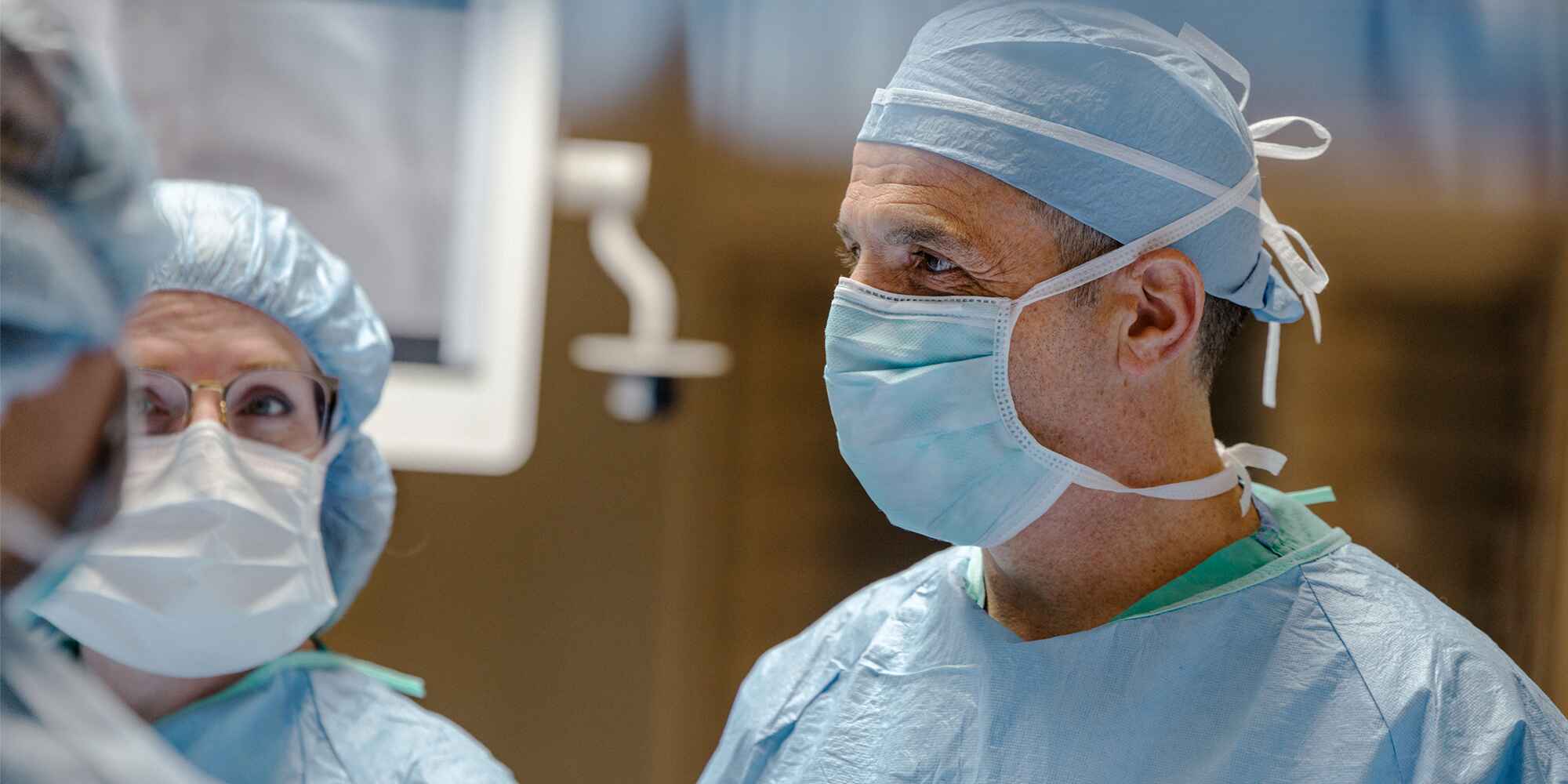Advanced Limb Preservation
Wounds that don’t heal can make everyday life painful and difficult. They also put you at risk for a life-changing amputation. When you come to St. Peter’s Health Partners, you have access to the region's only Advanced Limb Preservation Program.
Our team regularly treats patients who have been told by other doctors that amputation is necessary. We deliver advanced therapies that heal stubborn wounds and help more people avoid limb loss.
Is Limb Preservation Right for Me?
Wounds that don’t heal can worsen quickly, causing bone and tissue death or infections that are challenging to treat. They can also spread to other areas and become life-threatening. To prevent these complications, surgically removing the affected limb (amputating) is sometimes necessary. But, this option comes with changes in your abilities that are difficult to cope with.
Advanced limb preservation services from St. Peter’s Health Partners can help to lower your risk of limb loss.
Why Choose St. Peter’s Health Partners for Limb Preservation?
Our vascular surgeons use advanced therapies to help you avoid limb loss. Our experts have additional training from vascular surgery fellowships and have passed rigorous exams demonstrating their knowledge. Some doctors have an international reputation for excellence in care. We deliver focused therapies that can help preserve your limbs and quality of life.
Highlights of Our Program Include:
- Easy Access: Nonhealing wounds require timely medical attention, and that’s exactly what you’ll get at St. Peter’s Health Partners. Our limb preservation team sees new patients within one business day. If you need a procedure, it typically happens within one week.
- Convenience: You see multiple specialists in one visit, including vascular surgeons, podiatrists, general surgeons, and others. We also offer sophisticated on-site vascular testing services. These capabilities mean you leave your first appointment with much-needed answers and hope for avoiding limb loss.
- Patient Education: We take time to explain why wounds might not be healing and how we can help. If a procedure is necessary, you receive all the information you need to feel comfortable about our recommendation. We also let you know what to expect.
Limb Preservation Treatments
Limb preservation starts with wound care services, which include various therapies to promote healing and prevent complications. These services are available through our wound care center.
If these therapies are not successful, you may benefit from limb preservation treatments, which include:
- Atherectomy is a minimally invasive procedure to remove plaque buildup in the arteries, which decreases blood flow. A rotor-like tool cuts away the plaque.
- Complete Decongestive Therapy employs massage and other treatments that drain excess fluid (lymph) to relieve swelling. Get more information about lymphedema management.
- Hyperbaric Oxygen Therapy involves inhaling 100 percent oxygen while sitting inside a special chamber. The higher oxygen level accelerates healing, repairs tissue, and stimulates new cell growth.
- Peripheral Artery Bypass is a surgical procedure to reroute blood flow around damaged blood vessels, typically in the legs. We take a healthy blood vessel from another area of the body and use it to create a bypass.
- Venous Angioplasty and Stenting is a minimally invasive procedure that restores blood flow in clogged veins. We use a tiny balloon to widen the vein. Then we insert a stent (a hollow mesh device) to keep the artery open.
Long-Term Follow-Up Care
People who choose St. Peter’s Health Partners often become our patients for life. Even if limb preservation treatment is successful, it’s possible to experience nonhealing wounds in the future. We provide regular monitoring to detect the early signs of new wounds so you can start treatment before they become severe.
We are here for you if you notice signs of nonhealing wounds or have other urgent vascular health concerns. Some of our cardiovascular clinics take walk-in patients. No appointment is necessary.

